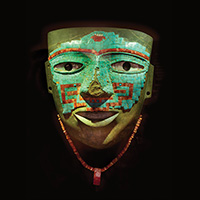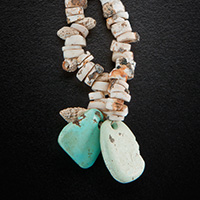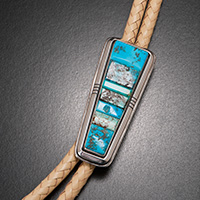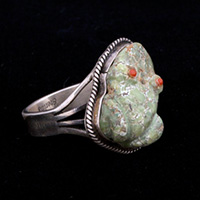Southwest Traditions:
Zuni Cluster and Inlay Designs
Zuni oral histories demonstrate the importance of turquoise. Their name for turquoise translates as “Sky stone,” although its color is otherwise linked to both sky and earth, blue and green. The stone features as a powerful and precious material in ceremonies today and in accounts of ancient ceremonies and sacred beings.
Zuni jewelry artists are renowned for their stone-cutting skills. Their meticulous lapidary work allows them to create patterns by grouping many small cabochons together into “cluster designs.” Likewise, inlaid turquoise, shell, and other stones fit together like puzzle pieces. In channel inlay, receptacles are formed by vertical silver walls and then filled with precisely cut stones. The practice of stone cutting is ancient and dates back many centuries.
Because turquoise is often used within larger designs, many Zuni artists prefer to use stone with little or no matrix, believing that veining distracts the viewer from appreciating the final pattern.
Della Casa-Appa was the first Zuni woman—perhaps the first Native American woman from the region—to be recognized for her skills as a jeweler. She made one of the squash-blossom necklaces. Burton Frasher, Courtesy Palace of the Governors Photo Archives (NMHM/DCA), Neg. No. 009189. Origin/Artist: Photograph by Burton Frasher.



